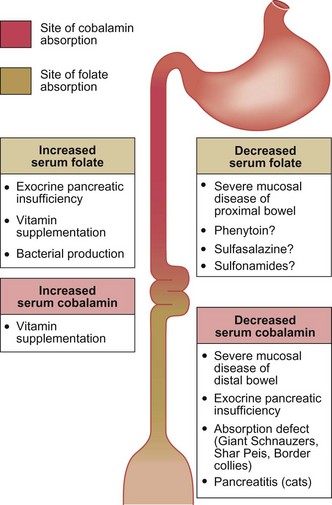15 Lymphocytic inflammatory bowel disease/alimentary lymphoma in a cat
Initial presentation
2 months of intermittent vomiting, with recent increase in frequency
Signalment: 9-year-old neutered male domestic shorthaired cat; body weight 3.9 kg
Problem list
Case work-up
Minimum data base
Haematology, serum chemistry, urinalysis and faecal examination were preformed.
Clinical tip: folate and cobalamin (vitamin B12)
Folate is absorbed only in the proximal intestine. A deficiency usually indicates small intestinal disease and if it is accompanied by a cobalamin deficiency it likely indicates widespread disease. A high serum folate can be caused by bacterial production, although serum concentrations of this vitamin are sensitive to food intake and a high dietary intake can also increase the serum concentration (Fig 15.1).
Stay updated, free articles. Join our Telegram channel

Full access? Get Clinical Tree



